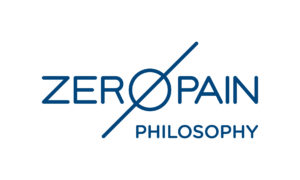Diagnosing the Pet, Not the Owner

Some people get very sniffy about populist entertainment but that population is very generic in its description and tends to encompass most people’s client base.
So I was intrigued by a video report on primetime UK television this week about what owners believed they knew about their dogs’ emotions.
Scientific it was not but they ran a test where owners were asked if they would know if their pet had stolen a treat when no-one was looking, through the animal’s "obviously guilty expression and behaviour".
Every owner was confident that they would and indeed, when told how their pet had performed in the test, they smugly said they knew immediately from the dog’s expression. Trouble was that the researchers then went on to lie about the dogs’ behaviour and showed that the only correlation between animal “guilt” and the owner’s perception was where the owner was told in advance that the animal had done a bad thing. – The animal was mirroring the expectation of the owner, and not at all showing emotion appropriate to its own behaviour. That existed only in the interpretation of the owner.
This was a simple TV experiment but we are all too familiar with the challenges of owner bias in reporting which can massively skew test results. Owner self-delusion, however well-intentioned, can also cause issues in difficult end-of-life decisions, and worse – mean that an animal may suffer unnecessarily until an owner faces up to the reality of how their pet really feels.
All of this was behind NewMetrica’s dedication to developing a simple but reliable tool to assess and monitor how the animal feels – not how its owner thinks it feels. Our tools have been developed by veterinary professionals over many years to measure health-related quality of life (HRQL) in the animal’s own terms, through a fully validated online algorithm.
It’s a simple, inexpensive and reliable, online tool based on the individual responses of the animal in question.
Results have shown it can significantly reduce the number of animals required to prove treatment efficacy, through greatly reducing owner bias and the human placebo effect. It also delivers objective information which the clinician can rely upon to improve relations with their human customer, in order to best help the animal.
Recent Posts
VetMetrica health-related quality of life tools contribute to a significantly reduced placebo effect in veterinary clinical trials
Development of an early health and wellbeing warning system for owners of companion animals
Development of an early warning system for owners using a validated Health-Related Quality of Life instrument
Using Veterinary Telemedicine (VTM) in the time of Covid-19
Covid-19 is changing the landscape in veterinary care

"I have been using VetMetrica for over 18 months now and have found it has revolutionised how I monitor patients and collect data. It is very easy to set up and the tools are intuitive and easy to follow
VetMetrica provides a great window into the animals’ quality of life and how it feels in its home environment. This has enabled me to better care for these patients and also collect good quality data for future publications. I cannot recommend VetMetrica enough. "
Andy Armitage, Greenside Vet Practice

Vetmetrica offers a valuable tool in assessing the impact of chronic pain on quality of life in dogs & cats. When treating chronic pain, most owners say that quality of life is paramount and they want their pet to be pain free. Vetmetrica engages owners and gives them the ability to measure quality of life.

"I found that a computer based scale run by Newmetrica... the same great people who gave us the Glasgow Pain Scales... is a wonderful way to get reliable quality of life scores. You can find it here at http://www.newmetrica.com/vetmetrica-hrql/. It generates a non-biased decision using a computer algorithum. Answers are weighted differently so it is harder for the caregiver to subconsciously manipulate the outcome. And they cannot go back and change their answers like they can on paper form" Dr Mike Petty

“Firstly I want to congratulate you and your team on the important work you are doing in the field of pain assessment and in particular the NewMetrica HRQL tool which I think is a real game changer!” – Leon Warne.



